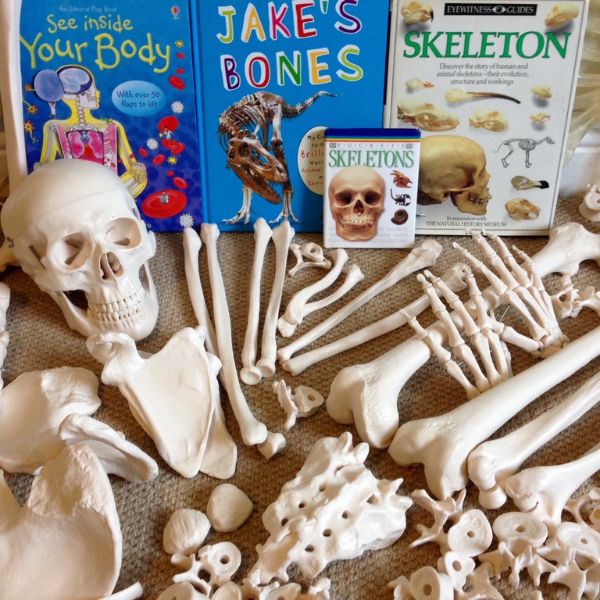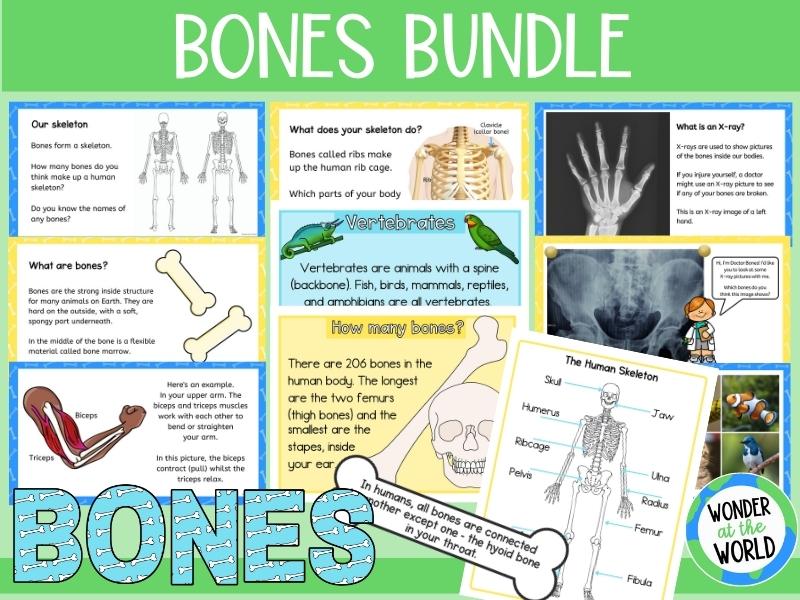Do you need some activity ideas for teaching the skeletal system at KS2 or elementary level? This blog post has plenty to get you started, with activities for both the human and animal skeletons.
Human skeleton models
A full-size human skeleton model is hands-down one of the best investments for primary science that you can make. If used and stored with care, they are robust enough to last for years. I’ve used one that was well over 20 years old and had been handled by thousands of children!
You can buy a skeleton upright and articulated, or as an alternative, disarticulated (although if going for the latter, choose a model where the hand and foot bones have been connected).
If you don’t have a school skeleton, a local secondary/high school may have one you can borrow.
You can download some free bone labels to use with your skeleton here. The labels have a mixture of scientific and everyday names for the bones so just use the ones that are most suitable for your learners.
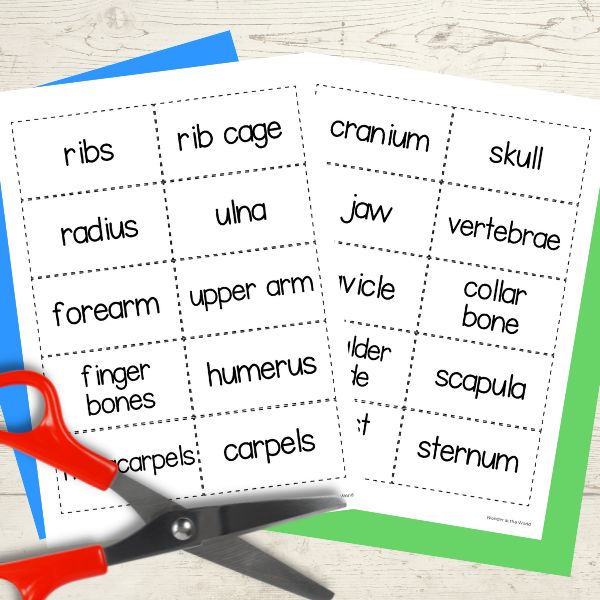
Compare and contrast 3d models
Smithsonian Open Access has a huge selection of 3D animal skulls and jaws to explore, including this white-tailed deer. Children can locate where the spinal cord enters the skull, find the joints between the skull and the jaw, identify the types of teeth, and see the position of the eye sockets.
One thing to keep in mind when using this resource is that almost all of the skulls with 3D images are mammals, and of those, most seem to be primates. The primate skulls are interesting to compare and contrast to our own!
Exploring real animal bones
If you can access owl pellets, these are a fascinating way of examining the bones of smaller mammals such as mice or voles. Some fragile bones are crushed as the owl digests its food but usually larger/stronger bones like the skull, jaw, femur, some vertebrae, hip bones, and some other limb bones remain intact.
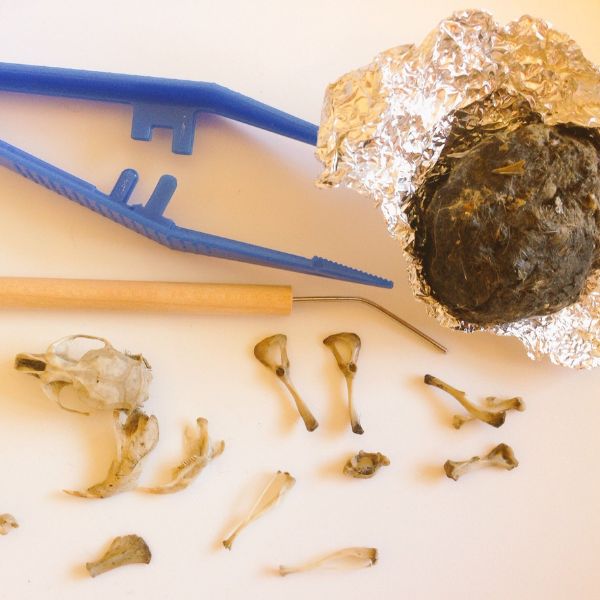
You can even clean the bones afterward using a hydrogen peroxide/water solution so that they can be kept for future activities. Be sure to have microscopes or magnifiers on hand due to the size of the bones. I have a whole blog post about owl pellets and how to dissect them here.
Another simple way of allowing children to handle and identify real bones is with fish skeletons. Tins of sardines or pilchards, alongside some tweezers, can be used to explore ribs and vertebrae. It can be smelly, but lots of fun! You could contrast with an invertebrate by using a shelled crab or prawn/shrimp from the fish counter as a comparison.
Stick skeletons
Take your learning outside with this ‘build an animal skeleton’ activity from Gratnells. Children will gather small twigs and sticks to create the skeletons of four different animals. They can work as a team, and try to identify each other’s creations at the end.
Identifying X-rays
Once children are familiar with the shapes of the bones in a human skeleton, they could try identifying and naming some from X-ray images. Many educational suppliers stock X-rays that be used with or without a lightbox. For a fun, whole-class activity, you could try this Google Slides activity (also available as a PowerPoint) where children help Dr Bones to identify the body parts in the x-ray images.
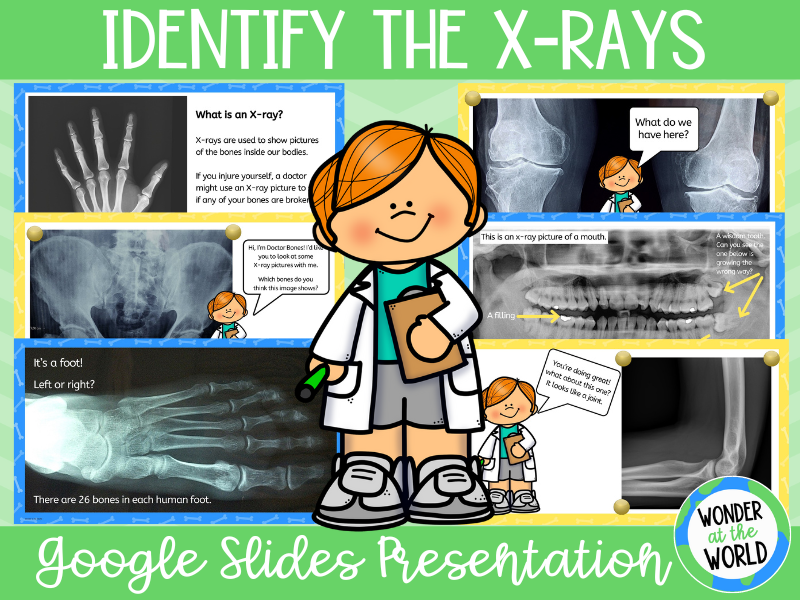
Resources from Wonder at the World
If you need extra materials to support your teaching in this area, check out my skeletons and bones bundle. This bundle has:
- A 30-page introduction to the skeletal system and animal skeletons
- Dr Bones identify the X-ray activity
- A display with posters, title, and fact cards.
- The link below will take you to the Google Slides version but this bundle can also be purchased with PowerPoints.
Other Reccommened Resources
As an Amazon Associate, I earn from qualifying purchases.
Kids love these X-rays! Use with a light box and identify the animal or human body part.
- Real x-rays printed on durable, long lasting plastic
- Can be used on overheads, windows and light tables
- Features 13 species and an activity guide to learn about the skeletal system
- Ideal for grades K through 4
- Package Quantity: 1
- Product Type: Puzzles
- Package Weight: 0.295 Kg
- Country Of Origin: United States
- Hardcover Book
- Balkan, Gabrielle (Author)
- English (Publication Language)
- 48 Pages – 09/18/2017 (Publication Date) – Phaidon Press (Publisher)
- Hardcover Book
- Howard, Jules (Author)
- English (Publication Language)
- 80 Pages – 04/07/2020 (Publication Date) – Big Picture Press (Publisher)
Join my mailing list and stay up to date with science teaching resources and ideas for kids
Want to connect? Grab a free fossil foldable activity when you join my mailing list and receive updates and ideas from Wonder at the World.
